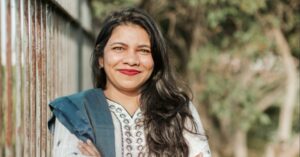Source: Special to Michigan News
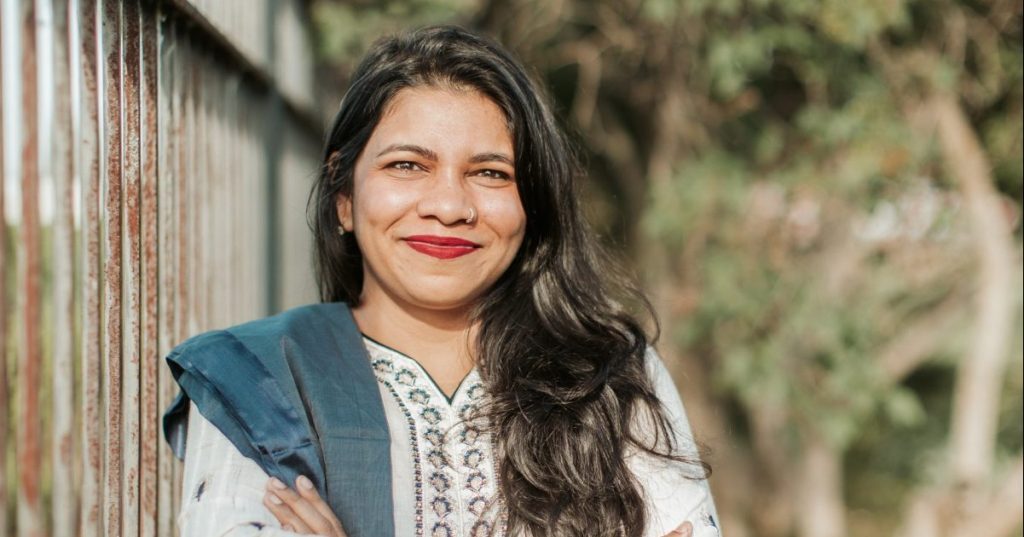
Fatema Haque
Fatema Haque has shaped her career and personal life around bringing up strong leaders, especially Asian-American women. As a Bangladeshi-American and Detroiter, a writer, a fiber artist, and as an academic program manager and a lecturer at the University of Michigan, her work revolves around helping people see their potential to shape change in the world.
Her work was exhibited in October and November of 2022 at Swords into Plowshares Gallery in Detroit as part of a special “The World We Need” exhibit. Haque is also planning out a solo show sometime in 2024 that will highlight the experiences of her family members who first emigrated to metro Detroit in the 1990s. We sat down and talked with Haque about her art, her inspiration and her work building the leaders of tomorrow.
What prompted you to take on these needlepoint portraits?
I started doing embroidery last year in February, I picked it up from a basic kit, but it’s something that’s been a part of my life for a very long time. My grandmother, my aunts, Bangladeshi women in general, typically do embroidery work, in the form of making blankets and beautiful tapestries, for the house. So I’ve always been fascinated by it, but never really picked it up myself until now. 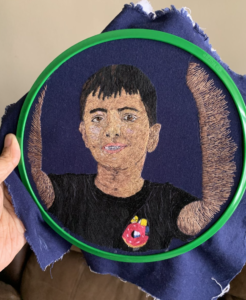
As I started to do this, I realized that representation is Bangladeshi people is missing in art and media. I was really interested in trying to capture some of them with my portraits. I started with what I know best, which happens to be my family, and so I’ve been doing portraits of my family members.
How does that tie in with your family heritage and your community?
This is the nakshi kantha, which has a long history in Southeast Asia. It was used by women first as a practical solution: they would take worn fabric that were too patchy or holey to be worn anymore, and they would repurpose them to create these multi layered blankets, like cotton saris layered on top of each other.
Women didn’t typically have a voice in government or politics, but one of the ways that they got involved was by telling stories through these beautiful tapestries. They would draw lots of images, lots of beautiful storylines — critiques of the current government even.
A lot of women would just spend time doing this in community with each other. It’s just been a very vital part of women’s lives. I think of that as my heritage and my legacy.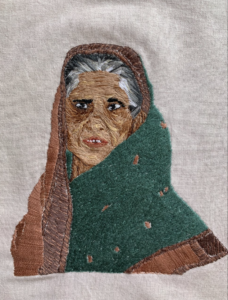
Another part of your legacy is in empowering Asian-American women. What does that work look like?
I was one of the founding members of the nonprofit Rising Voices, which we launched to be a space for Asian American woman to get politically involved and active, and a way to organize Asian American families here in Detroit. We’ve worked on everything from local school boards to senate races. We’ve done a lot of work around COVID-19 Mutual Aid, as well as the census when we had that and making sure people were counted.
This ties directly in with your work at the University of Michigan to empower leaders, right?
I teach a project-based learning class that help students think about community-centered pedagogy. We ask, “How do you work ethically and effectively with community?”
Behind the course is really this big question of “Leadership for what? Can we talk about what we want to be leaders for?” It’s very purpose-driven work.
What connections do you see between your work on leadership and empowering students, and leadership and empowering members of the Bangladeshi-American community?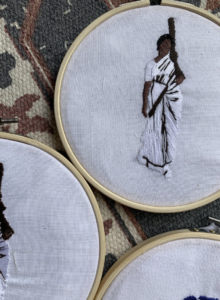
I think their throughputs that you can follow are in representation and visibility. When I talk about leadership with my students, we’ve talked a lot about social identities. We interrogate the history of leadership studies and we complicate that picture to be more inclusive of the people who actually make up our institutions today.
I think the same concept goes through Rising Voices. A lot of women may not consider themselves to be leaders. For Rising Voices, I created a youth leadership fellowship., I always start that those sessions by asking, “Who here has considered yourself a leader?” Only a handful of students will raise their hands.
And I think that if you see yourself in, in the media, in arts, in your community, in the classroom, whatever spaces you are in — if you start seeing leaders and recognizing strong leadership for what it is, then I think that it makes a huge difference.

